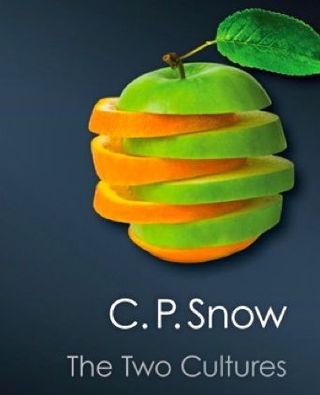Cognition
Diametrically Beyond the Two Cultures
Conflict between science and humanities is rooted in cognition.
Posted August 29, 2012

In the Rede Lecture of 1959, the scientist and writer C. P. Snow described what he termed “the two cultures.”
The term defined a cultural world with humanistic intellectuals at one pole and physical scientists and engineers at the other. Snow continued: “Between the two, a gulf of mutual incomprehension—sometimes (particularly among the young) hostility and dislike, but most of all lack of understanding. They have a curious distorted image of each other. Their attitudes are so different that, even on the level of emotion, they can’t find much common ground.”
As Jiro Tanaka points out in a recent essay:
Over the ensuing decades, Snow’s lecture has elicited impassioned commentary from intellectual luminaries such as the literary critic F. R. Leavis and the evolutionary biologist Stephen Jay Gould. The academic culture wars of the eighties and nineties were in many ways a re-enactment of this feud. Partisans on each side intoned their shibboleths proudly, like battle cries, until one day this polarization coalesced, farcically and irrevocably, in the form of Alan Sokal’s Social Text hoax.
"But," Tanaka asks, "what if this divide between literary intellectuals and physical scientists were more than just a clash of cultures?" and continues: "The answer I would suggest as the leading candidate is a spectrum (or continuum) ranging from 'mechanistic' to 'mentalistic' thinking" like that proposed by the diametric model of the mind.*
Tanaka provides the diagram below, which places psychoanalysis rightly in my view between story-telling and poetry on the mentalistic side. Indeed, this is all the more striking a position for it to end up in when you consider that, at the outset, Freud was emphatic that psychoanalysis was a science! But the truth is that even Psychology Today’s blogsite lacks psychoanalysis as a subject area, and today most Freudians are to be found in university departments of Literature or Social Science, not Psychology—and certainly not Psychiatry. As Jesus might have put it, "By their fruits of the two cultures shall ye know them!"

Tanaka does not put Behaviorism on this conceptual map, but it seems to me that it belongs on the mechanistic side, opposite psychoanalysis, thanks to its emphatic anti-mentalism and the fact that autistics have been compared to Behaviorists in the extent of their hypo-mentalism. But if that is so, then the diametric model itself ought to be dead center, just below the Social Sciences, because of the way it recognizes both extremes of mentalism, while maintaining its own, central position of poise.
But these are details. Tanaka’s essay is a beautifully written introduction to the diametric model for general readers and deserves to be widely read and cited. Let me finish by quoting and thoroughly endorsing its conclusion:
What C. P. Snow was describing was not a conflict between two recently invented subcultures, but a conflict of two ancient scripts—the one that shows us “how to do things with things” and the one that shows us “how to do things with people.” When Kant, late in life, published his Conflict of the Faculties, he was thinking about the extent to which university faculties should mirror the faculties of Reason. How surprised would he have been to hear that these “faculties” might, when stripped down to the core, turn out to be instincts far older and more animal than anything he could have imagined?
And of course, if the imprinted brain theory is correct, more genetic than he—or most people today—could imagine.
*This is described as an attempt to “revise and extend Baron-Cohen’s” empathizing/systemizing dichotomy, but in fact the idea of parallel mechanistic and mentalistic modes of cognition occurred to me independently of—and before I knew about—Baron-Cohen’s model. Indeed, it was published online in 2002, and in hard copy in 2004. (Badcock, C. R., 'Mentalism and Mechanism: the twin modes of human cognition', Chapter 5 in Human Nature and Social Values: Implications of Evolutionary Psychology for Public Policy edited by Charles Crawford & Catherine Salmon (Erlbaum, 2004), pp.99-116).
(With thanks and acknowledgment to Jiro Tanaka .)


